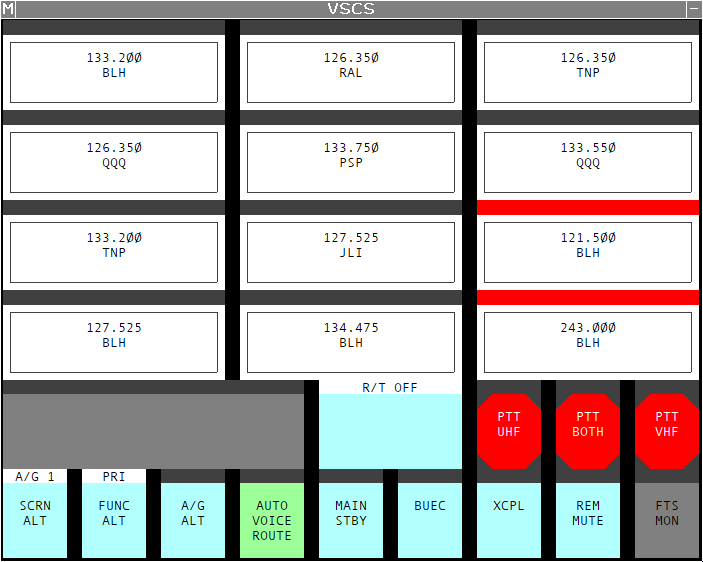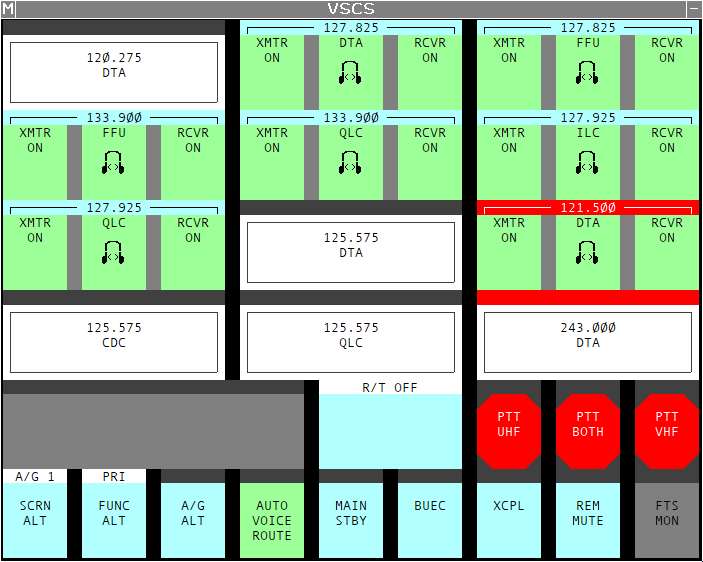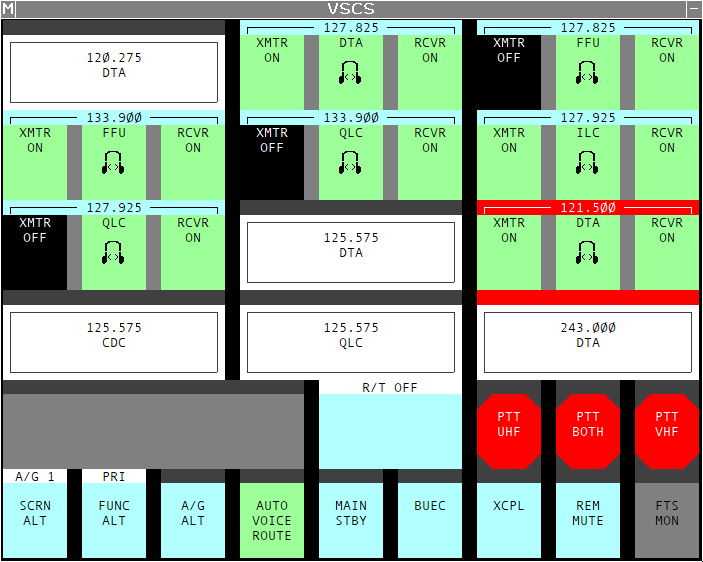This section will describe the the POSCON's voice system as well as how to utilize it's functionality as an air traffic controller.
Our goal is to create the most realistic aviation radio emulation available and to that end, we have simulated some key characteristics of VHF radio such as line-of-sight (LOS), terrain occlusion, and blocking. Users need to be aware that, while these features add additional realism, they also can create real-world limitations.
VHF only works when the ATC ground transmitter and the aircraft are in direct line-of-sight of each other. There are many variables that affect line-of-sight such as transmitter elevation, altitude of the aircraft, curvature of the earth, and surrounding obstructions such as terrain. All of these variables are accurately modelled on POSCON, thus if an aircraft loses line-of-sight with your transmitter, you will lose radio coverage with the aircraft.
Currently, cross-coupling of frequencies is not available so we have created a few temporary workarounds to provide effective top-down service to pilots.
- Top-Down Transmitters - We have created a few "fake" transmitters for each FIR strategically positioned in locations where aircraft on the ground at any airport within your airspace can hear your transmissions. Your Facility Data Specialists will advise you what the names of these transmitters are.
- Guard Transmitters - For Guard frequency (VHF 121.5 or UHF 243.0), we have applied the same concept as the "top-down" transmitters, but on a sector-by-sector basis. Each Guard transmitter is positioned strategically within the airspace for maximum effectiveness.
In the real-world, the Voice Switching & Control System (VSCS) is a hardware and application interface that allows controllers to activate VHF/UHF transmitters for associated sector frequencies and also make audio input/output selections. The VSCS is part of the controller's workstation, but is not technically part of the ERAM computer human interface.
For the purposes of POSCON, however, we have combined the VSCS into the ERAM program and it can be accessed via the MASTER TOOLBAR > VIEWS menu.
The VSCS requires a controller to be Signed-In to a position in order for it to populate data from the server. Once populated, it should look something like this:
Each white box indicates a different air-to-ground frequency/transmitter combination. Within each white box, the top line indicates the VHF or UHF frequency while the bottom line indicates the transmitter name. The logic behind what is shown on this page is as follows:
- The first button located in the top left is always going to show the frequency of the sector you signed into.
- All other frequency/transmitter buttons are populated from the Facility + Area that you signed into.
- The two white boxes shown with a red line over-top of them indicate emergency transmitters.
The three red PTT buttons located just below the emergency transmitters are push-to-talk buttons that activate the emergency transmitters. The logic for the emergency PTTs is as follows:
- PTT UHF - Is currently not operational.
- PTT BOTH - Will activate both the PTT UHF and PTT VHF when PTT UHF becomes operational.
- PTT VHF - Simultaneously activates the VHF 121.5 MHz transmitter and any other selected transmitters set to transmit.
Here is how it would look if you push the PTT VHF button:
On the bottom of the VSCS panel, there are various control buttons. The only button that works in this row currently is the Air-to-Ground Alternate (A/G ALT) page button. This button shows a second page of frequency/transmitter buttons if needed for overflow.
To enable a transmitter, TBP anywhere on the white box the then TBP on the "XMTR OFF" button. This will enable the transmitter to transmit and receive.
To disable the transmit function only, but still receive, simply click the "XMTR OFF" button again.
ATC have the option to route a transmitter output audio from your headset device (left image) to your speaker device (right image). To do this, TBP on the middle green box.
When you activate your PTT to transmit on frequency, the XMTR OFF box will illuminate orange. When an aircraft transmits and breaks squelch on your frequency, the RCVR ON box will illuminate orange.
It is highly recommended to not have multiple transmitters set to transmit on the same frequency simultaneously. The reason for this recommendation is because if an aircraft has LOS with both transmitters, they will get a blocking tone and will be unable to hear your transmission. If your transmitters are far enough apart though, this likely won't be an issue; however, please consult with your FIR's Facility Data Specialist first before deviating from this recommendation.
Below is an example of generally how not to configure your VSCS panel:
Reasons why the above image is wrong:
- You are configured to transmit on frequency 127.825 on both DTA and FFU.
- You are configured to transmit on frequency 133.900 on both FFU and QLC.
- You are configured to transmit on frequency 127.925 on both ILC and QLC.
Here is the best configuration:








